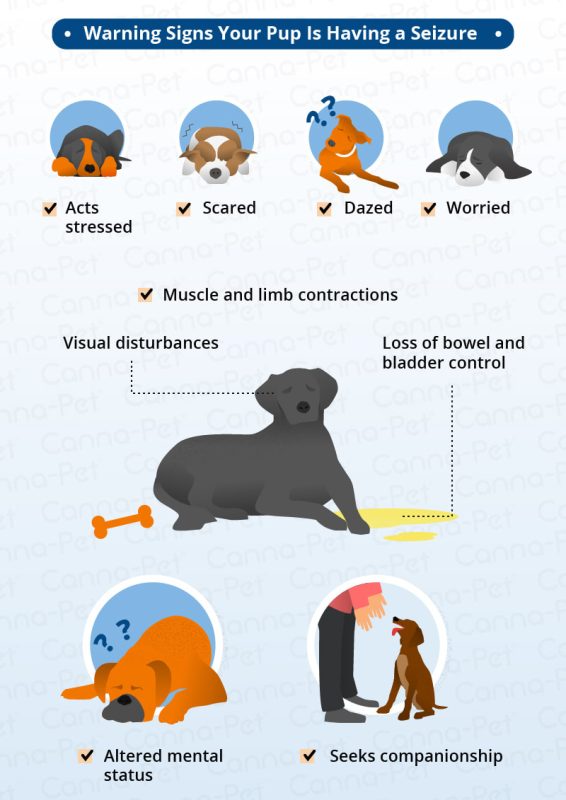
Titimeas i madraí agus cait

What is epilepsy? Epilepsy is a disease in which the cerebral cortex is damaged, causing tremors, convulsions, and convulsions. Consider the types of this disease and possible assistance to the pet.
Clár ábhair
Cineálacha titimeas
For owners, as a rule, all conditions accompanied by trembling or convulsions are epilepsy. Actually it is not. There are idiopathic and symptomatic epilepsy and epileptoid states. Let’s take a closer look.
- Symptomatic epilepsy occurs with diseases of the brain, for example, in the presence of a tumor or hydrocephalus.
- Idiopathic epilepsy is seizures without an objective reason. That is, during the diagnosis, it is not possible to find out what caused the pathology.
- Epileptoid or epileptiform convulsions. Occur in various diseases.
The first 2 points refer to true epilepsy, this diagnosis is not so common.
Comharthaí cliniciúla
Epilepsy can manifest itself in different ways. There may be various symptoms, both singly and in combination:
- Cailliúint an Chonaic
- Trembling and twitching of individual muscles of the body, muzzle, limbs
- Tension of limbs and whole body
- Spontaneous aggression
- Foam from the mouth, vomiting
- Spontaneous defecation and urination
- Unnatural vocalization
An epileptic seizure is divided into 4 stages:
- The animal is worried, nervous, hypersalivation may appear.
- Shortly before the attack, the animal either stretches closer to the person, or hides, experiences hallucinations, stupor, and muscles may twitch. Immediately before an attack, dogs often walk or lie down with an absent expression of the muzzle, cats get scared, rush about, randomly jump or try to run away, fluff their tail.
- The animal loses consciousness, falls sideways, convulsive rowing movements with its paws appear, also the paws can be tense and stretched forward, the hind legs can be pressed to the stomach. Minor chewing movements occur with the jaws, often the tongue or cheek is bitten, and the foam from the mouth turns pink with blood. For a short period of time, the mouth can open very much, the teeth are bared. Due to the tension of the abdominal muscles, involuntary urination and defecation occurs. Eyes are most often wide open, pupils are dilated, reflexes are absent. At the peak of the seizure, the pet, without regaining consciousness, can scream loudly, especially dogs – whine and squeal, which greatly frightens the owners. The duration of the attack is from 1 to 5 minutes. Then the animal comes to its senses and tries to get up.
- After an attack, hypersalivation, muscle weakness persist for some time, the animal is disoriented, it can be either depressed or too excited.
Status epilepticus is a generalized definition of an acute condition, when each subsequent seizure occurs before the animal has completely recovered from the previous seizure. Most often, in this state, the animal is unconscious, convulsions can be incessant, or very often repeated, when it seems that the attack has already passed, the animal has relaxed, but a new series of convulsions immediately begins. It also happens that the animal loses consciousness, and convulsions are not observed. Sometimes seizures affect only one group of muscles, such as a limb, the animal either remains conscious or suddenly loses it. Serial epileptic seizures differ from epileptic seizures only in that in the pauses between seizures (or their series), the patient’s condition relatively normalizes, consciousness is restored to one degree or another, and there is no progressive disruption of the functioning of organs and systems. Serial epileptic seizures, however, can transform into an epileptic state, and the line between them may not always be clearly delineated.
Na cúiseanna an ghalair
What could be the causes of true epilepsy and conditions that are similar to it?
- Infectious diseases: toxoplasmosis, feline viral leukemia, feline infectious peritonitis, infectious hepatitis, feline immunodeficiency virus, canine distemper, rabies, mycoses
- Hydrocephalus
- Neoplasia
- Idiopathic conditions
- Deficiency of micro and macro elements
- Heart attack and stroke
- Galair an néarchóras
- Hypoxia (lack of oxygen)
- Traumatic brain injury, spinal injury
- Tumors of the brain and spine
- Breathing and palpitations
- Poisonings, eg, theobromine, isoniazid, rodenticides, poisonous plants, organophosphates, heavy metals
- Decreased blood glucose levels, which may be due to diabetes mellitus or xylitol poisoning
- Portosystemic shunt, which is more common in miniature breed dogs
- Einceifileapaite hepatic
- Neamhoird electrolyte
- postpartum eclampsia
- Sun or heat stroke
- Otitis media and inner ear
- Titimeas idiopathic
How to help an animal during an attack
You should not try to immediately bring the animal to consciousness, try to correct the tongue, especially unclench the teeth and insert something into the mouth, press the pet to the floor: all this is fraught with injuries, both for the pet and the owner: an animal that does not control itself, even in an unconscious state may accidentally severely scratch or bite. In addition, there are often manifestations of aggression before and after an attack, it is worth being careful when manipulating the animal. One has only to move away from the pet dangerous objects that can fall on him or injure him in any way. It is highly desirable for the owner himself to pull himself together and film what is happening on video, this can help the doctor in making a diagnosis. Since often after the cessation of seizures at the reception, the doctor sees an absolutely healthy animal. Try to take your pet to the veterinary clinic as soon as possible, as there are many causes for epilepsy. Most dangerously, if the animal falls into status epilepticus, it is very dangerous for the brain. In this case, emergency care and even medical sleep are needed.
Diagnóisic
If you have symptoms of epilepsy, you should contact your veterinary neurologist. A video recording of an attack can greatly help in the diagnosis. Also of great importance is the information provided by the owner: vaccinations, chronic and previously transferred diseases, diet, etc. Next, the doctor will conduct an examination, check reflexes, temperature, measure blood glucose, blood tests, urine tests, blood pressure, hormone and electrolyte levels. If everything is in order, then an MRI of the brain and an EEG, an analysis of the cerebrospinal fluid, if possible, can be prescribed. If, according to the results of the studies, pathologies are not found, then the doctor makes a diagnosis of true epilepsy.
Cóireáil agus prognóis
Anticonvulsants are used to treat epilepsy. The prognosis is cautious. In status epilepticus, an intravenous catheter is placed and the animal is put into drug sleep for 2–4 hours, depending on the duration of the status state: to reduce the metabolic needs of the brain, seizures are stopped, and then anticonvulsant drugs are tried. If they are not effective or the animal cannot be removed from the status, then the prognosis is unfavorable. If we are dealing with conditions similar to epilepsy, then the treatment can be very different, as well as the prognosis, and depends on the diagnosed disease.





